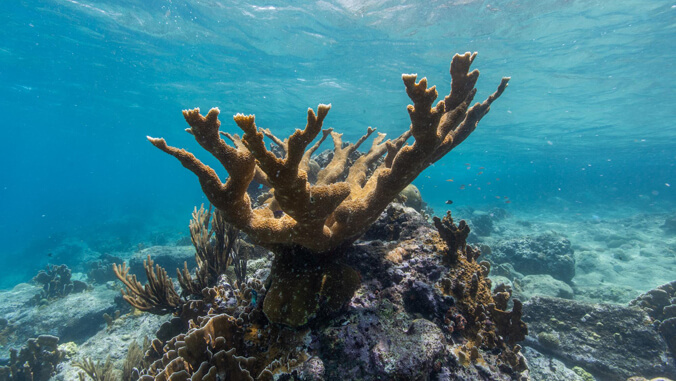
Researchers have achieved a breakthrough in the fight to save the world's coral reefs from climate change annihilation. In a paper published in Nature Communications, lead authors E. Michael Henley and Mary Hagedorn, research biologists at the University of Hawaiʻi at Mānoa's Hawaiʻi Institute of Marine Biology (HIMB), and other co-authors describe the first successful technique for cryopreserving (preserving samples using cold temperatures) and reviving entire coral fragments.
This milestone was conducted in Kāneʻohe Bay at HIMB and heralds a new age for cryopreservation and coral conservation because the coral fragments contain tens of thousands of cells and are among the most complex biological systems ever successfully ushered through the cryopreservation and thawing process. This proof-of-concept opens the door to collecting and preserving coral fragments easily and rapidly at an urgent moment for coral worldwide.
"This process holds enormous promise to conserve the biodiversity and genetic diversity of coral," said Hagedorn, who is also a senior research scientist at Smithsonian's National Zoo and Conservation Biology Institute (NZCBI). "If we can scale this up and refine the post-thaw husbandry [care and cultivation of coral], we will be able to work year-round rather than just a few days during spawning seasons. If we can do that, this will be a really viable process that changes how we see the security of corals going forward."
Recent climate models estimate if greenhouse gas emissions continue unabated, 95% or more of the world's corals could die by the mid-2030s. This leaves precious little time to safeguard their estimated $10 trillion annual economic value or the innumerable other marine species that rely on corals for their livelihood.
Reviving corals
Current coral cryopreservation techniques rely largely on freezing sperm and larvae, which can only be collected during fleeting spawning events, which occur only a few days a year for a species. This creates a logistical challenge for researchers and conservationists, and limits the speed with which coral species can be successfully cryo-banked. To complicate matters further, warming oceans and increasingly frequent marine heatwaves mean corals can be biologically stressed such that their reproductive material is too weak for the rigors of being cryopreserved and thawed.
With these limitations in mind, Hagedorn and her colleagues started their work to cryopreserve and revive entire fragments of coral in 2019. The small fragments of coral used in this study feature about 20 individual coral polyps embedded in a calcium carbonate skeleton. This large mass of tissue with tens of thousands of cells and a skeleton is far more complex to cryopreserve than a single cell, such as a sperm. To get around this problem, Hagedorn and her collaborators focused on a process called isochoric vitrification, a method of freezing that prevents the formation of ice-crystals.
Preserving corals in glass-like state
This technique minimizes the toxicity of the cryopreservation solution and prevents the formation of ice by placing the biological material inside a rigid aluminum chamber. When researchers seal the coral fragment inside the solution-filled chamber and rapidly cool it with liquid nitrogen, any water inside tends to not expand or form ice crystals that can damage tissue. If ice starts to form, the unyielding walls of the aluminum chamber restrict its growth. Instead of ice formation, isochoric vitrification preserves the coral polyps in a glass-like state that avoids damage to their delicate cells.
The research team tested the isochoric vitrification technique with thumbnail-sized fragments of the finger coral (Porites compressa) from Hawaiʻi. After immersing the coral fragments in a bath of liquid nitrogen inside their aluminum chambers, the chambers were warmed, then the fragments were transferred to seawater and allowed to recover. When assessing the health of the revived corals, they found the rate of oxygen consumed by the thawed corals was comparable to those that were never cooled. The team stopped their oxygen measurements at 24 hours because of a desire to separate the success of the vitrification process from husbandry issues that will require ongoing refinement.
Now, Henley, also a research scientist at NZCBI, and the collaborative team are actively working on the problem of how to keep corals alive beyond 24 hours post-thaw, and the team is exploring the use of antibiotics, antioxidants and probiotics to bolster the corals' microbiomes and help them survive.
"Our goal is to cryopreserve as many species of coral as possible by 2030," said Henley. "If this is successful, we may be able to do that. At a time when climate change is moving so fast, this gives us an amazing ability to stop time here in the 2020s."






